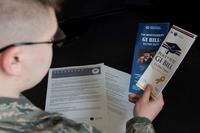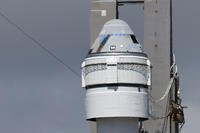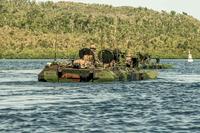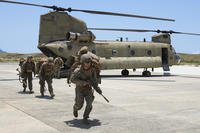BAGRAM AIRFIELD, Afghanistan -- Look in the air ... it's a bird ... it's a plane ... Well, not quite: It's a German Shepard in a harness hanging from an HH-60G Pave Hawk.
More than 15 U.S. Army tactical explosive detection dog handlers and their canines participated in rescue training scenarios June 21, with pararescuemen assigned to the 83rd Expeditionary Rescue Squadron here.
The training required Army infantry personnel to practice hoisting their dogs into a helicopter.
According to U.S. Army Sgt. Jack Barsley, the infantry career field inherited the tactical explosive detection dogs less than five years ago. The dogs are trained to detect 14 different scents, including TNT, C4, homemade explosives and even detonation cord that could be wired to an improvised explosive device.
"The MP's have military working dogs, but we (infantry) perform more of the tactical portion outside the wire," Barsley said. "We fight in combat while using our dogs to help find IED's. The chances of us needing rescued are high while here."
Just like people, some dogs are comfortable with helicopters and some are not. According to the dog handlers, most of the dogs were skittish, so each duo took turns bringing the dogs near the helicopters to get them used to the sound prior to hoisting them.
Army Sgt. Nina Alero has already participated in a mission that required her and the dog to get onto a helicopter.
"The dog was stressed out because of all the noise, it's like sensory overload for them," Alero said. "This training would have been beneficial to have prior, so I could have known my dog's reaction to getting in and out of the chopper."
This exercise serves as familiarization training not only for the dogs and their handlers, but pararescuemen as well.
"Most pararescueman have never hoisted dogs into a helicopter before, so this was an experiment to see how the dogs would react to the sound of the helicopters and being in air," said Staff Sgt. Kenneth O'Brien, a pararescueman with the 83rd ERQS.
A week prior, the pararescuemen created a specialized K-9 harness specifically for this training. O'Brien, who is on his second deployment, said that he while has never had to hoist a military working dog during a mission, on his first deployment he did provide medical care to at least 10 military dogs.
"It's best that we figure out all the kinks in training while we are in a controlled environment, rather than when we are in the field getting shot at," O'Brien said. "This training is very important because in this mountainous terrain, we practice hoisting people all the time, but there is always a chance we will have to rescue a dog because they are part of the team too."
Military working dogs have been a valuable asset to the military since their first use in 1942 as the Army's K-9 corps. In today's military, they have a variety of duties and hold military rank according to the Department of Defense's military working dogs website.


























